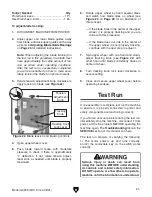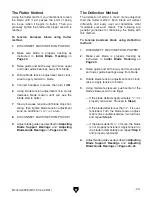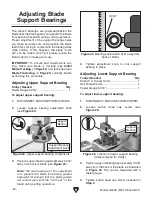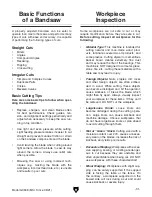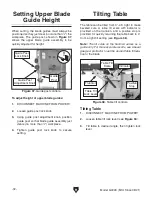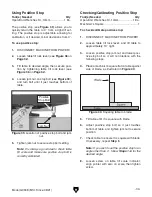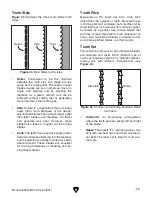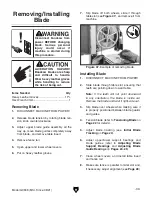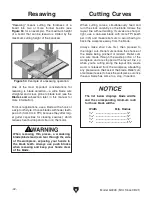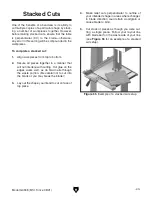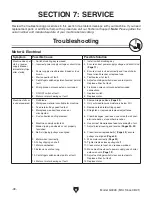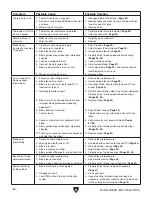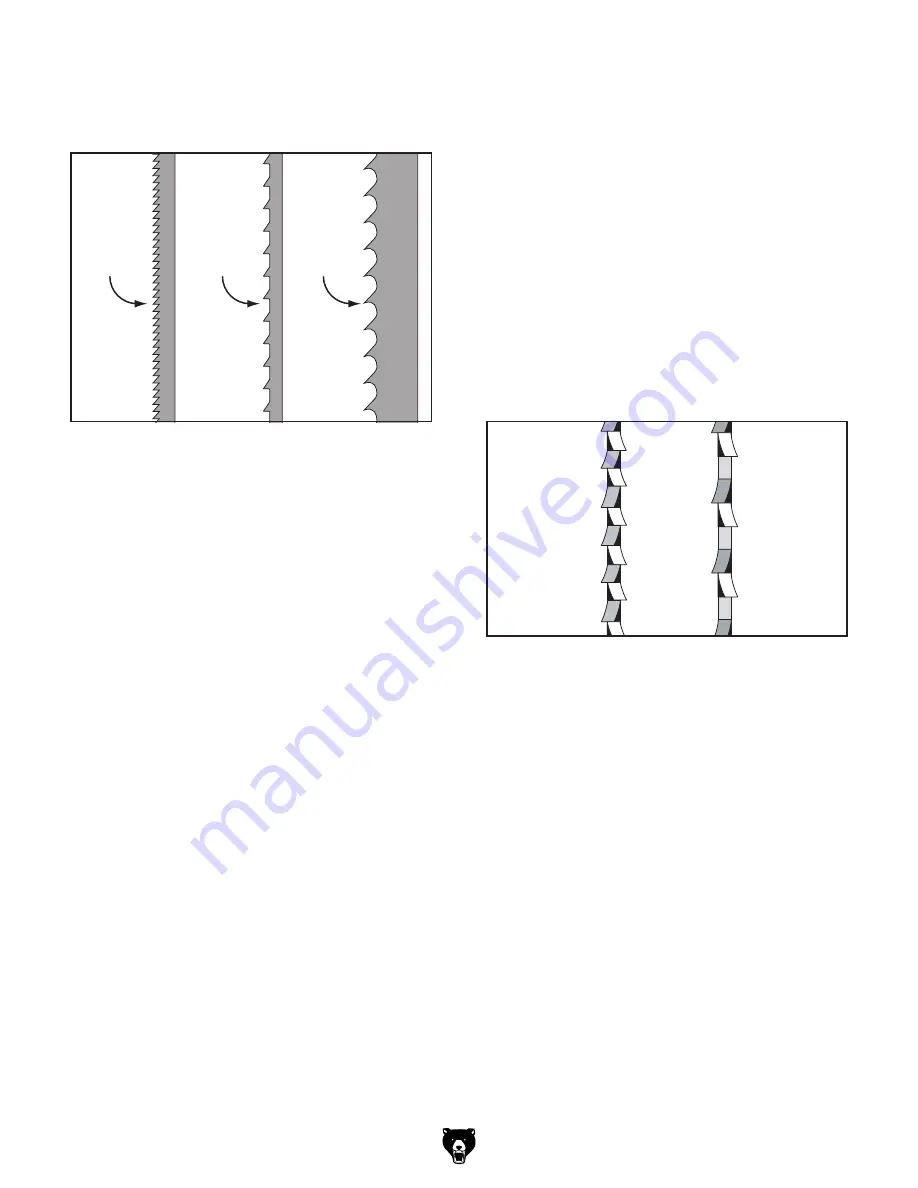
Model G0948 (Mfd. Since 08/21)
-35-
•
Raker: Considered to be the standard
because the tooth size and shape are the
same as the tooth gullet. The teeth on raker
blades usually are very numerous, have no
angle, and produce cuts by scraping the
material. As a result, smooth cuts can be
achieved without cutting fast or generating
more heat than other tooth types.
•
Skip: Similar to a raker blade that is missing
every other tooth. Because of the design,
skip toothed blades have a much larger gullet
than raker blades, and therefore, cut faster
and generate less heat. However, these
blades also leave a rougher cut than raker
blades.
•
Hook: The teeth have a positive angle (down-
ward) which makes them dig into the material,
and the gullets are usually rounded for easier
waste removal. These blades are excellent
for the tough demands of resawing and rip-
ping thick material.
Raker
Skip
Hook
Figure 43. Main blade tooth styles.
Tooth Pitch
Measured as TPI (teeth per inch), tooth pitch
determines the number of teeth. More teeth per
inch (fine pitch) will cut slower, but smoother; while
fewer teeth per inch (coarse pitch) will cut rougher,
but faster. As a general rule, choose blades that
will have at least three teeth in the material at all
times. Use fine-pitched blades on harder woods
and coarse-pitched blades on softer woods.
Tooth Style
Figure 43 illustrates the three main blade tooth
styles:
Tooth Set
Two common tooth sets for wood bandsaw blades
are alternate and raker. Each different type of
tooth set removes material in a different manner,
leaving cuts with different characteristics (see
Figure 44).
Alternate
Raker
Figure 44. Common woodcutting bandsaw blade
tooth sets.
•
Alternate: An all-purpose arrangement
where the teeth are bent evenly left and right
of the blade.
•
Raker: Three teeth in a recurring group—one
bent left, one bent right, and then one that is
not bent. The raker set is ideal for most con-
tour cuts.
Summary of Contents for G0948
Page 68: ......

